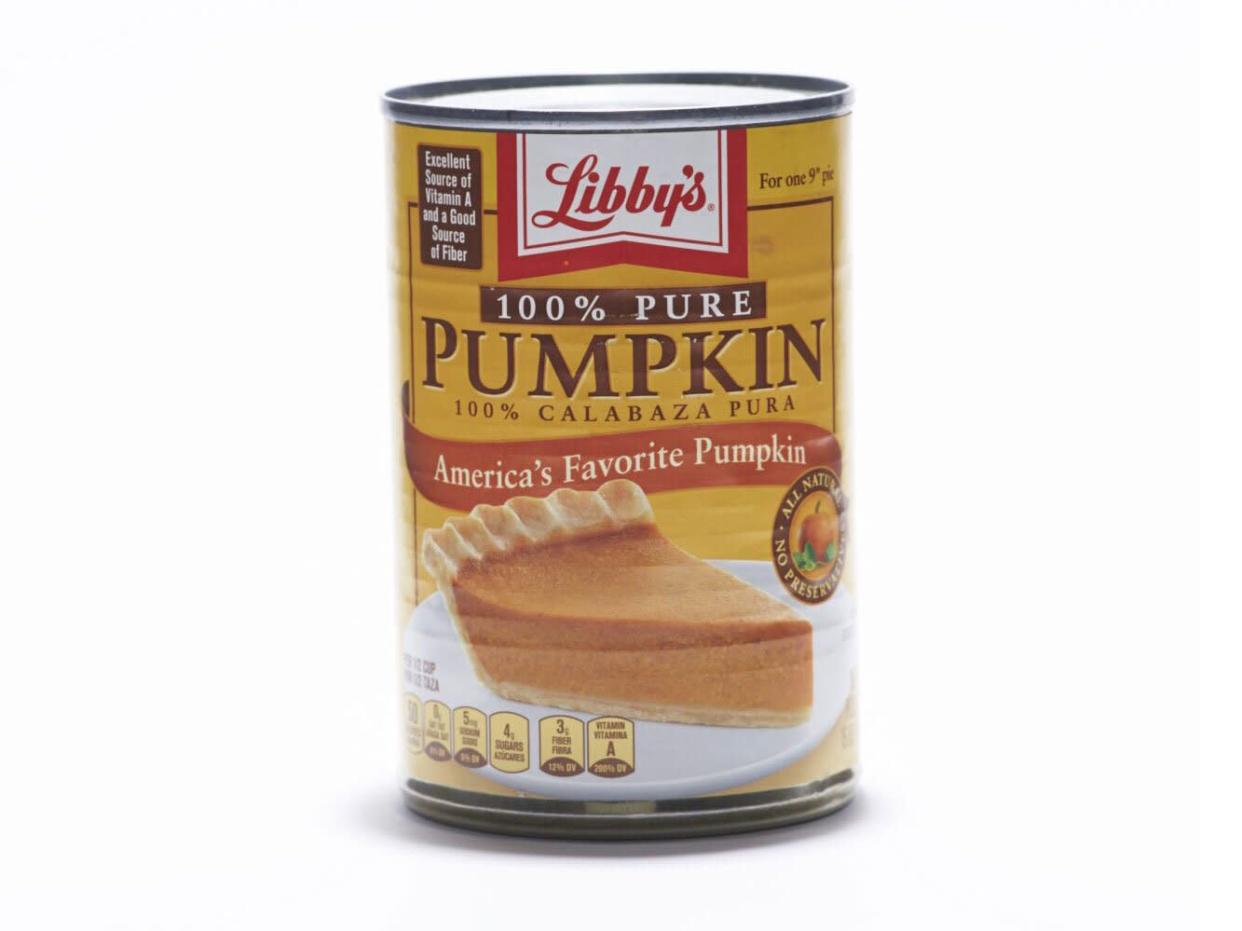What's really in canned Pumpkin?
This may seem like a silly question easily answered by glancing at the back of the can, but rumor has it canned pumpkin is not quite what it seems.
Some say it can contain more than just pumpkin (and we aren’t talking about spices). We’re not ones to gossip, but especially around the holidays, this pantry staple is irreplaceable, as it’s both incredibly convenient and produces consistent results pie after pie.
So while it might say 100 percent pumpkin on the can, we had to find out if that was 100 percent true.
What Is in Canned Pumpkin?
You may have heard that canned pumpkin is actually made of squash. That is both true and untrue.
Libby’s, the quintessential canned pumpkin brand, uses a proprietary strain of the Dickinson pumpkin variety in their product, which is also often called a Dickinson squash. On the FAQ section of Libby’s website, it states that their product is 100 percent pumpkin. And that’s true, in the sense that any hard-skinned squash can be called a pumpkin because there isn’t a botanical distinction for what makes a pumpkin, a pumpkin.
The Dickinson pumpkin is a variety of squash belonging to the Cucurbitaceae family or gourd family, which also includes melons and cucumbers. Longer and tanner than the round, orange sugar pumpkins we typically think of when we think of pumpkin pie, the Dickinson pumpkin variety more closely resembles squash. In fact, its closest relative is butternut squash.
Libby’s uses this kind of gourd because it has both a better taste and texture than other pumpkins. While Libby’s only uses this pumpkin in their product, other canned pumpkin brands produce purees made with one or more types of winter squash, like butternut, Hubbard, Boston Marrow, and Golden Delicious.
Why the Confusion?
It all gets confusing because the terms squash and pumpkin aren’t very well differentiated by the USDA. Just look at how they define canned pumpkin: “The canned product prepared from clean, sound, properly matured, golden-fleshed, firm-shelled, sweet varieties of either pumpkins and squashes by washing, stemming, cutting, steaming, and reducing to a pulp.”
That leaves a lot of room for some companies to use a variety of squash and still legally call the product 100 percent canned pumpkin.
What Kind of Canned Pumpkin Should I Use?
In a blind taste test, Libby’s wowed our editors, squash debacle or not. Whatever you call the variety they use, it’s the tried and true choice for a reason. Libby’s makes more than 80 percent of the canned pumpkin in the U.S., and all of the pumpkins they use, they grow and manufacture in their Morton, Illinois headquarters. Not only are the pumpkins non-GMO, but once pureed, contain no added preservatives.
What About Homemade Pumpkin Puree?
Whether it contains squash or not, canned pumpkin is much easier to use and more consistent than a homemade puree. Homemade pumpkin purees can vary in water and sugar content, which can lead to mixed results in something as precise as baking.
Not that it’s all about looks, but homemade pumpkin purees also tend to produce a duller looking pie that isn’t as visually appealing. Canned pumpkin is processed industrially, so the puree has smoother texture than homemade, which can produce a less silky pie.
You also won’t have access to Libby’s proprietary pumpkins, and supermarket cooking pumpkins just aren’t as sweet. Sure, you could make pumpkin puree yourself, but grandma never did, so why should you?
Source: Read Full Article
